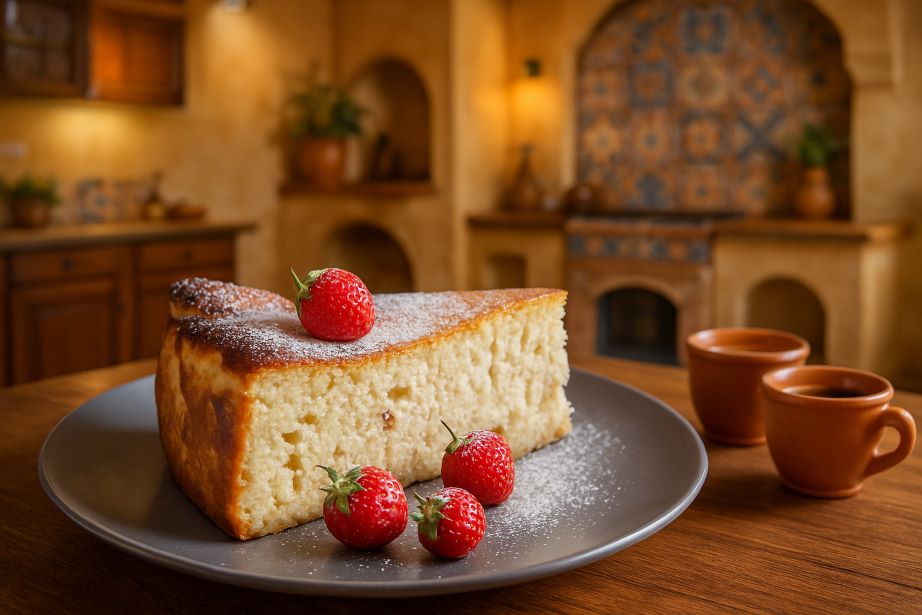Ingredients
Equipment
Instructions
- Preheat the oven to 350 degrees Fahrenheit and apply a coat of grease to a 9-inch springform pan.
- Using a stand mixer or a large bowl, beat together the butter and 2 cups of sugar until creamy. Incorporate the ricotta cheese and mix for 4-5 minutes, allowing the mixture to achieve a light and airy consistency. Introduce the eggs and vanilla thereafter.
- Add the flour, lemon zest, vanilla extract, and salt to the batter in the bowl, and continue mixing until everything is well combined.
- Pour the batter into the greased springform pan and bake for around 60 minutes, or until the top turns golden. Once the cake is fully baked, take it out of the oven and allow it to rest for 15 minutes. Then, transfer it to a cooling rack to let it cool down completely.
- Afterward, cover the cake and place it in the refrigerator for a few hours before serving. Before serving, dust the top of the cake with powdered sugar.
Notes
Use Whole Milk Ricotta:
For the creamiest texture and richest flavor, always use full-fat, whole milk ricotta. If your ricotta is too watery, strain it through cheesecloth for a few hours to remove excess moisture. Don’t Overmix the Batter:
Mix just until the ingredients are combined. Overmixing can incorporate too much air, which may cause the cheesecake to crack or rise unevenly. Add Flavor Naturally:
Lemon zest, vanilla extract, or a splash of citrus liqueur add subtle depth without overpowering the delicate ricotta flavor. Bake Low and Slow:
Bake your cheesecake at a lower temperature to help prevent cracking and ensure a smooth, custardy texture. A water bath can also help maintain even heat and reduce the risk of overbaking. Let It Cool Gradually:
After baking, allow the cheesecake to cool in the oven with the door slightly ajar. This prevents sudden temperature changes that can cause the top to crack.
For the creamiest texture and richest flavor, always use full-fat, whole milk ricotta. If your ricotta is too watery, strain it through cheesecloth for a few hours to remove excess moisture. Don’t Overmix the Batter:
Mix just until the ingredients are combined. Overmixing can incorporate too much air, which may cause the cheesecake to crack or rise unevenly. Add Flavor Naturally:
Lemon zest, vanilla extract, or a splash of citrus liqueur add subtle depth without overpowering the delicate ricotta flavor. Bake Low and Slow:
Bake your cheesecake at a lower temperature to help prevent cracking and ensure a smooth, custardy texture. A water bath can also help maintain even heat and reduce the risk of overbaking. Let It Cool Gradually:
After baking, allow the cheesecake to cool in the oven with the door slightly ajar. This prevents sudden temperature changes that can cause the top to crack.
